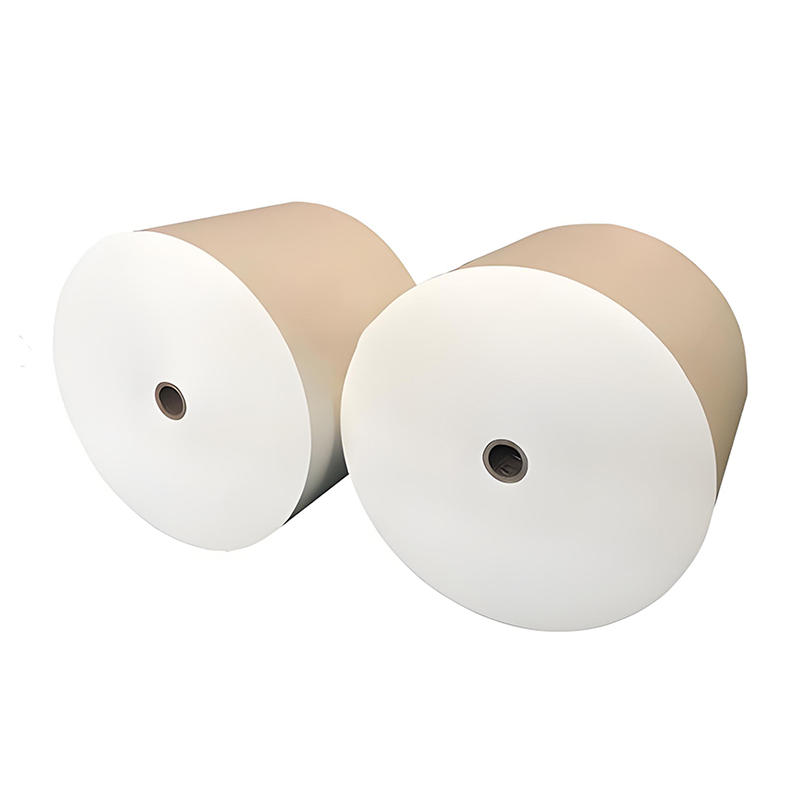In today's environmentally conscious market, sustainable packaging solutions are becoming increasingly important. One such innovation that has gained significant traction is PLA coated paper. This material represents a crucial step forward in reducing our reliance on conventional plastics while maintaining the functional properties required for various applications.

PLA coated paper refers to paper or paperboard that has been coated with a thin layer of polylactic acid (PLA), a biopolymer derived from renewable resources such as corn starch, sugarcane, or other plant-based materials. Unlike traditional petroleum-based plastic coatings like polyethylene (PE), PLA is biodegradable and compostable under industrial composting conditions. The coating process typically involves extruding a thin layer of PLA onto the paper substrate, creating a barrier that provides moisture resistance, grease resistance, and heat sealability while maintaining the paper's recyclability and compostability.
PLA coated paper exhibits several distinctive technical characteristics supported by specific performance data:
Barrier Properties: PLA coatings provide excellent barrier performance against oils and greases, with Kit rating values typically between 5-12 depending on coating thickness and base paper quality. The water vapor transmission rate (WVTR) ranges from 15-40 g/m²/24h at 23°C and 85% RH, making it suitable for short-term moisture protection.
Thermal Properties: PLA has a glass transition temperature (Tg) of 55-60°C and a melting temperature (Tm) of 150-160°C. This allows for heat sealing at temperatures between 80-120°C with seal strengths reaching 200-400 N/m.
Mechanical Properties: The tensile strength of PLA coatings typically ranges from 50-70 MPa with elongation at break of 4-10%. The coating adds stiffness to the paper substrate, increasing the bending resistance by 15-30% compared to uncoated paper.
Environmental Performance: PLA coated paper demonstrates 90% biodegradation within 60-90 days under industrial composting conditions (58°C, controlled humidity). The material has a carbon footprint of approximately 1.0-1.5 kg CO2 equivalent per kg, significantly lower than conventional PE-coated paper which typically ranges from 2.5-3.5 kg CO2 equivalent per kg.
Optical Properties: PLA coatings provide high clarity with haze values below 5% and gloss levels reaching 80-95 GU at 60°, offering excellent printability and visual appeal.
The unique combination of sustainability and functional performance makes PLA coated paper suitable for numerous applications across various industries:
Food Packaging: PLA coated paper is extensively used in fast food packaging, including cups for cold beverages, takeaway containers, sandwich wraps, and bakery papers. The material's grease resistance and compostability make it ideal for these applications. Specific uses include cold drink cups with 8-16 oz capacity, hamburger wrappers, and french fry bags that maintain crispness while being environmentally responsible.
Service Ware: The material is increasingly popular for Disposable Plates, bowls, and trays for events, catering, and food service. These products combine the natural feel of paper with the functional barrier of PLA, capable of holding moist foods for 2-4 hours without significant degradation of the paper substrate.
Industrial Packaging: Certain industrial applications utilize PLA coated paper for wrapping components that require temporary protection from moisture or oils. The compostability aspect is particularly valuable for companies seeking to reduce their environmental impact and meet sustainability targets.
Consumer Goods Packaging: PLA coated paper finds applications in packaging for dry goods, cosmetics, and other consumer products where a sustainable image is important. The high-quality printing surface allows for vibrant branding while maintaining environmental credentials.
To maximize the performance and sustainability benefits of PLA coated paper products, proper handling and care are essential:
Storage Conditions: PLA coated paper should be stored in a cool, dry environment with temperatures maintained between 15-25°C and relative humidity below 60%. Exposure to high temperatures approaching the glass transition temperature (55°C) can cause blocking or deformation of the PLA coating. The material should be protected from direct sunlight, as UV exposure can lead to embrittlement over time.
Usage Temperature Limitations: While PLA coated paper can briefly withstand temperatures up to 50°C, prolonged exposure to temperatures above 40°C is not recommended. For hot food applications, the internal temperature should not exceed 40-45°C to prevent softening of the PLA coating. The material is not suitable for microwave use as the PLA coating will melt at temperatures above 150°C.
Moisture Management: Although PLA coatings provide moisture resistance, they are not completely waterproof. Products should not be exposed to liquid water for extended periods (beyond 30-60 minutes). For refrigerated applications, the material performs well but condensation should be minimized to prevent moisture migration through the paper substrate.
End-of-Life Handling: For proper disposal, PLA coated paper should be directed to industrial composting facilities where temperatures of 58±2°C and specific moisture conditions (50-60% RH) enable complete biodegradation. In the absence of industrial composting, the material can be processed in paper recycling streams in limited quantities (up to 5% contamination), though this may vary by local recycling capabilities. Avoid sending PLA coated paper to conventional plastic recycling as it contaminates the PET or PE streams.
Shelf Life Considerations: PLA coated paper products typically have a shelf life of 12-18 months when stored under recommended conditions. Beyond this period, the PLA coating may begin to crystallize, potentially affecting flexibility and barrier properties. Products intended for long-term storage should be evaluated through accelerated aging tests specific to their application requirements.
As the global push for sustainable packaging intensifies, PLA coated paper represents a viable alternative to conventional plastic-coated papers, offering a balance between functional performance and environmental responsibility. With proper understanding of its characteristics and care requirements, businesses and consumers can effectively utilize this material to reduce their environmental footprint while meeting practical packaging needs.